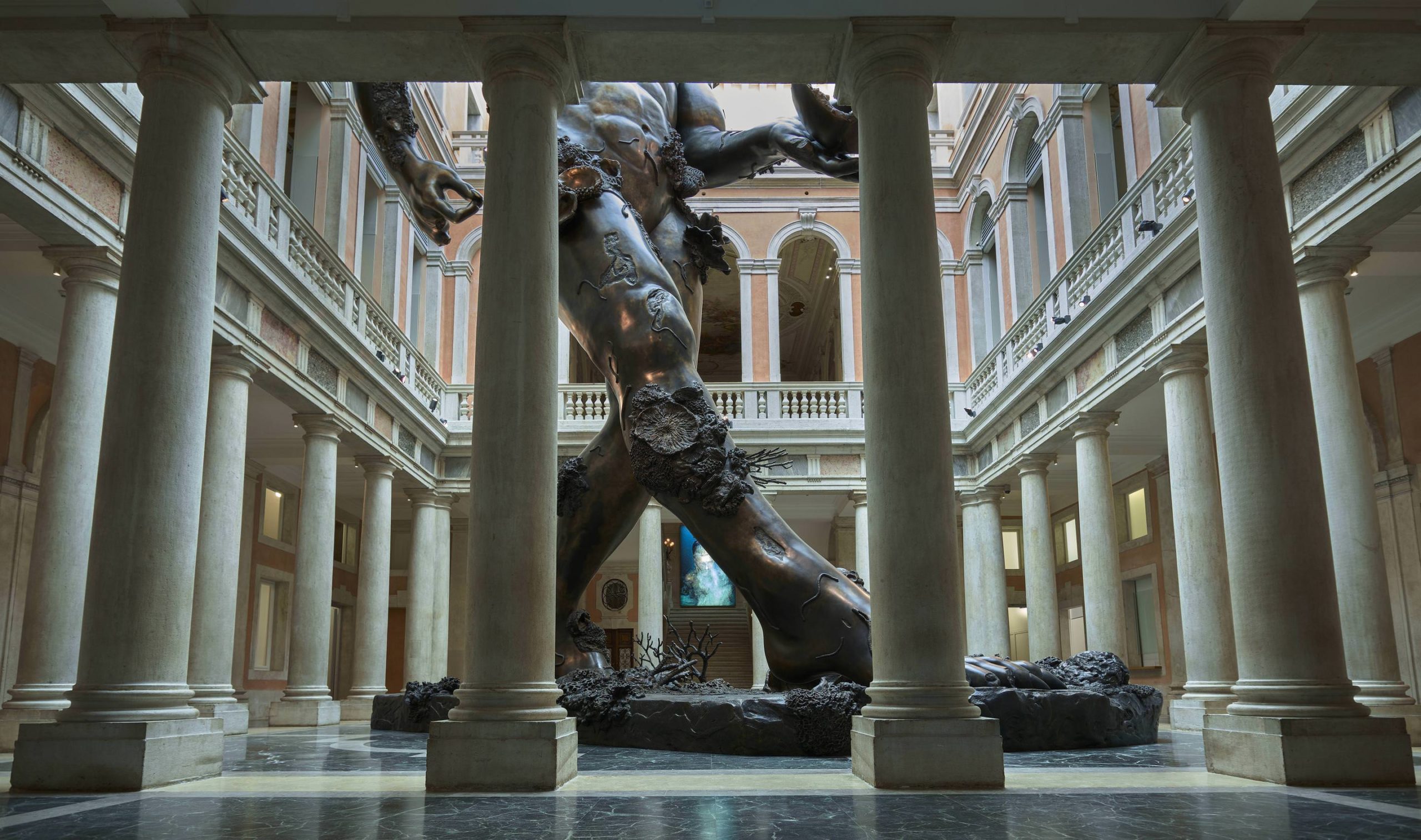It was drizzling rain on a Friday afternoon when we pulled up to Swizz Beatz’s art-filled home in New Jersey. Upon walking in, we were drenched in color from a painting that took over the ceiling—a piece by an artist we couldn’t immediately recognize. That’s Swizz’s thing, though, acquiring work by artists that are both known and unknown for The Dean Collection.
He uses a similar approach when inviting artists to participate in his art fair, No Commission, presented by Bacardi. It has taken place in cities like Miami, New York, and Shanghai, providing artists with exhibition space at no cost and all proceeds from sales of their work going directly to them, too.
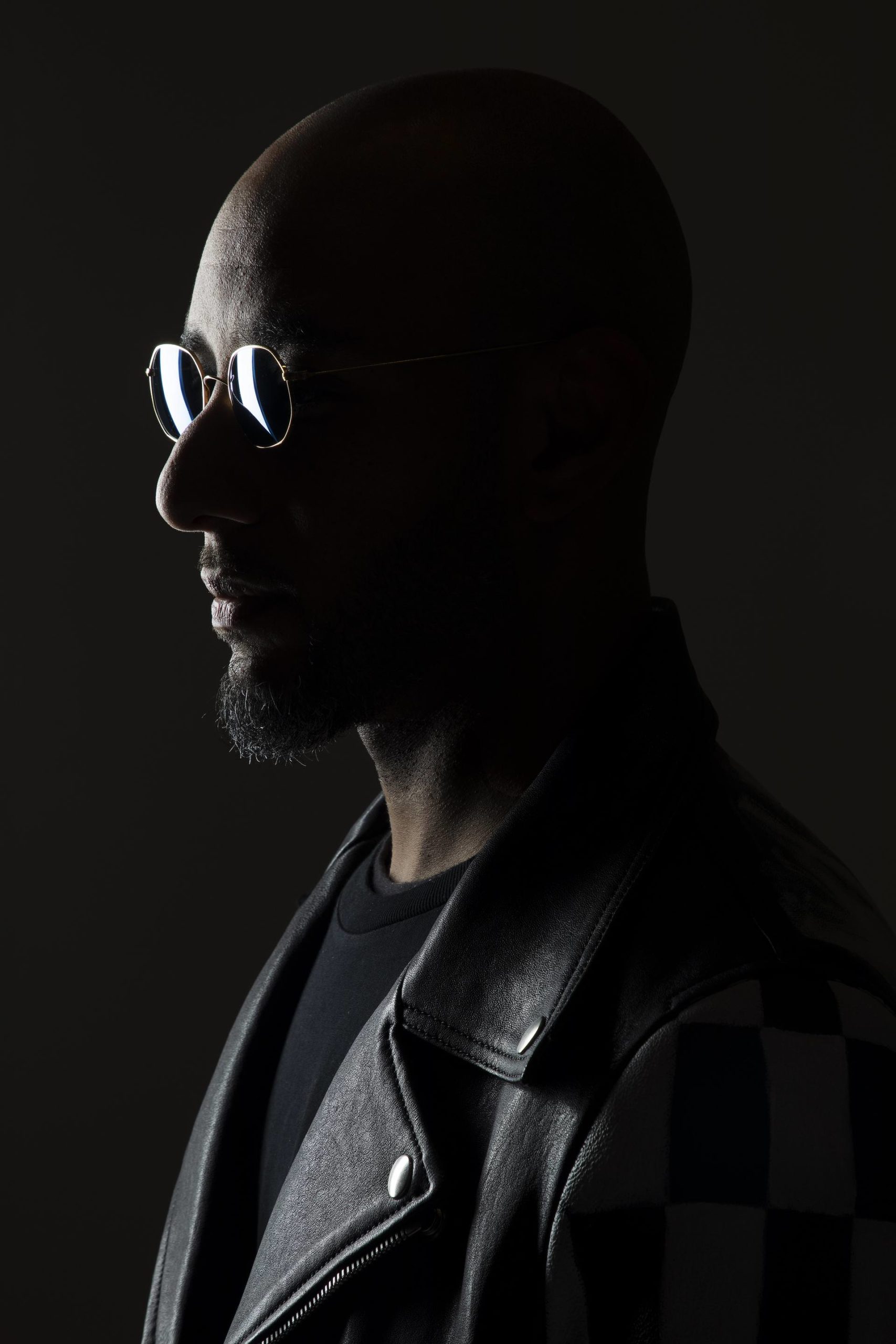 Portrait by Steve Benisty
Portrait by Steve Benisty
Swizz, as he’s known in the creative world, holds a gamut of titles, including art collector, music producer, fashion collaborator, Harvard graduate, husband to Alicia Keys, father, and philanthropist. These titles guide his collaborative work with musicians like Jay-Z and Kanye West, and brands like Bally and Zenith.
Most recently, he partnered with Faith Connexion to curate the brand’s artistic collaborations—starting with a capsule collection by the artist Nina Chanel Abney. The 11-piece collection offers signature pieces to the brand, like bombers and leather jackets, adorned with Abney’s colorful and collage-forward art. On the backs of jackets, we see Xs affixed to mouths to prevent speech, eagles that recall symbolism of the United States, and traces of the artist’s “Always a Winner” series from 2015.
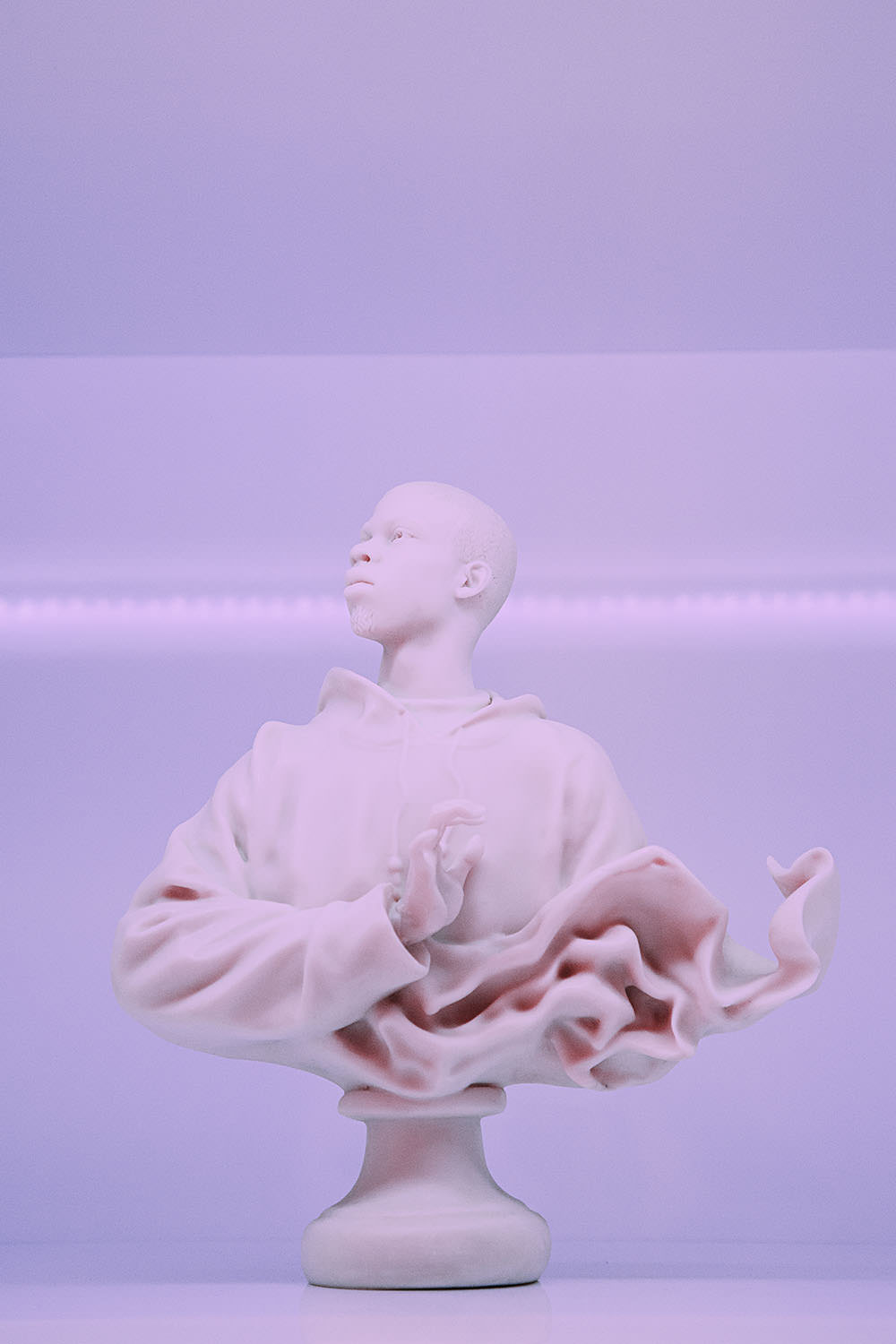 Photo by Steve Benisty
Photo by Steve Benisty
To learn more about the importance of offering artists a larger platform, Whitewall spoke with Swizz and Maria Buccellati, president and co-founder of Faith Connexion,.
WHITEWALL: Swizz and Maria, can you tell us about the recent collaboration with Faith Connexion and Nina Chanel Abney?
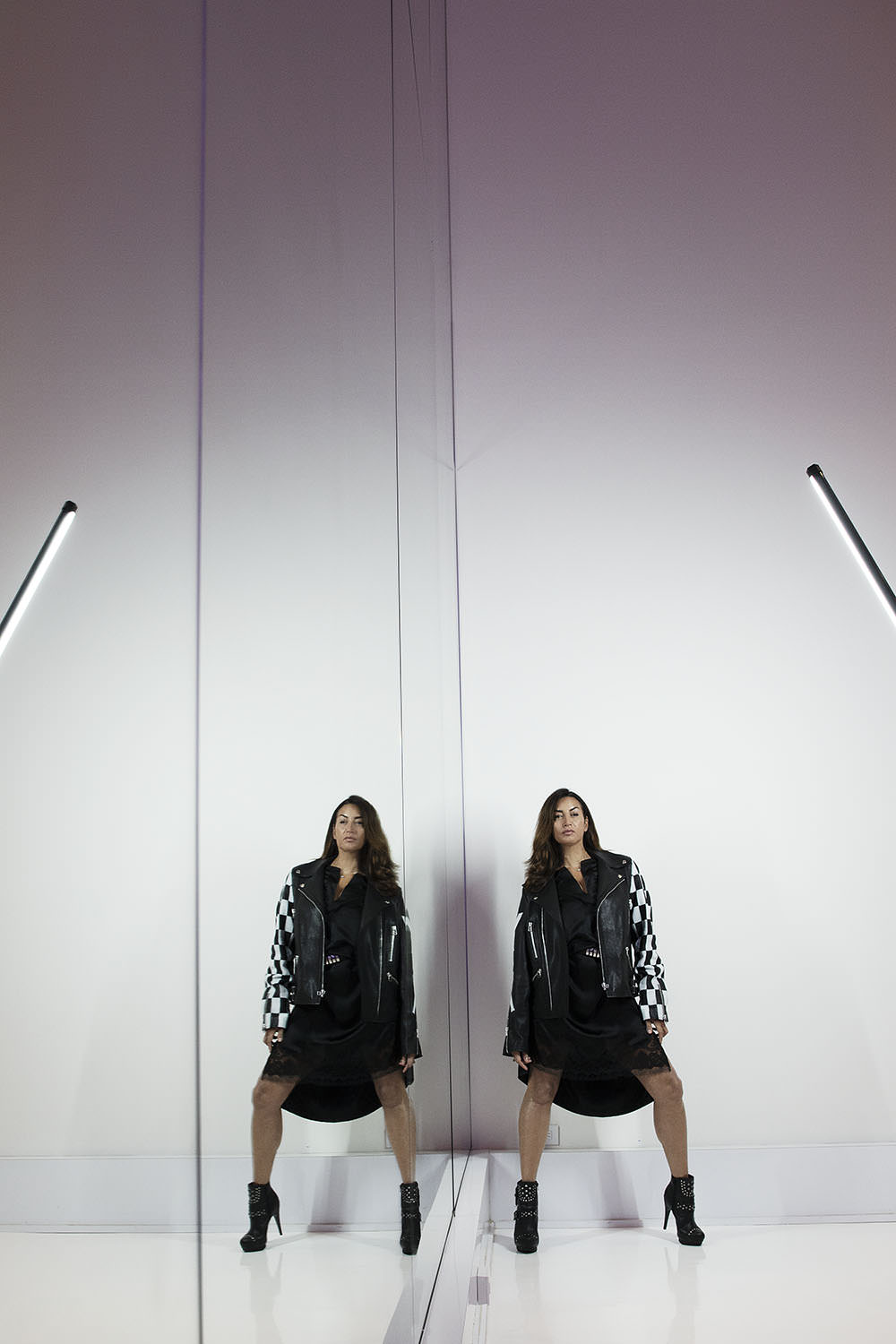 Maria Buccellati
Maria BuccellatiPhoto by Steve Benisty
SWIZZ BEATZ: My collaboration with Faith Connexion entails creativity, fashion, and artistry. Maria and Alex [Allard] have been friends of mine for years—they’ve believed in my vision for a long time. It’s refreshing to see a brand that really represents the artist by supporting them and doing big things.
The Dean Collection is very big advocate of all creatives, and Nina Chanel is one of the leading forces of female artists leading the charge. I felt that Faith Connexion could help lead that charge. I was to pick one, and Nina Chanel was that perfect person for it. Her work is amazing. She’s a game changer.
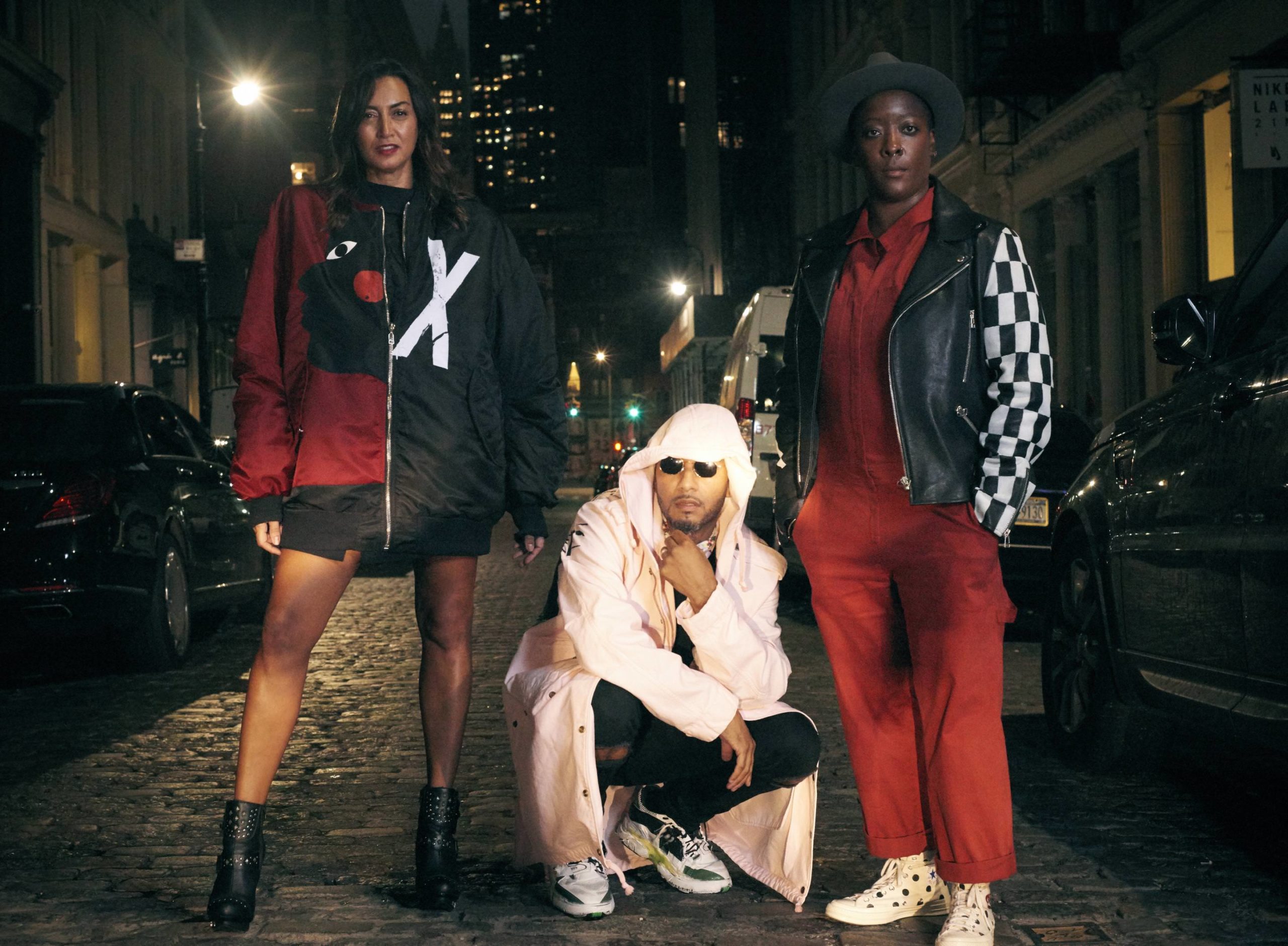 © Nina Chanel Abney, licensed by Artestar, New York. Photo by Alex Raduan, courtesy of Faith Connexion.
© Nina Chanel Abney, licensed by Artestar, New York. Photo by Alex Raduan, courtesy of Faith Connexion.
MARIA BUCCELLATI: This collection was one of the first we sold as an installation. Clients loved it, especially the eight unisex pieces that were cool and funky, led by Swizz and adorned by Nina’s amazing, colorful art. Swizz chose pink as the base color for the collection. We debuted the collection during Paris Fashion Week in June this year. It speaks Faith’s language really well, combining art, music, and fashion.
WW: What do you admire about Nina Chanel Abney’s work?
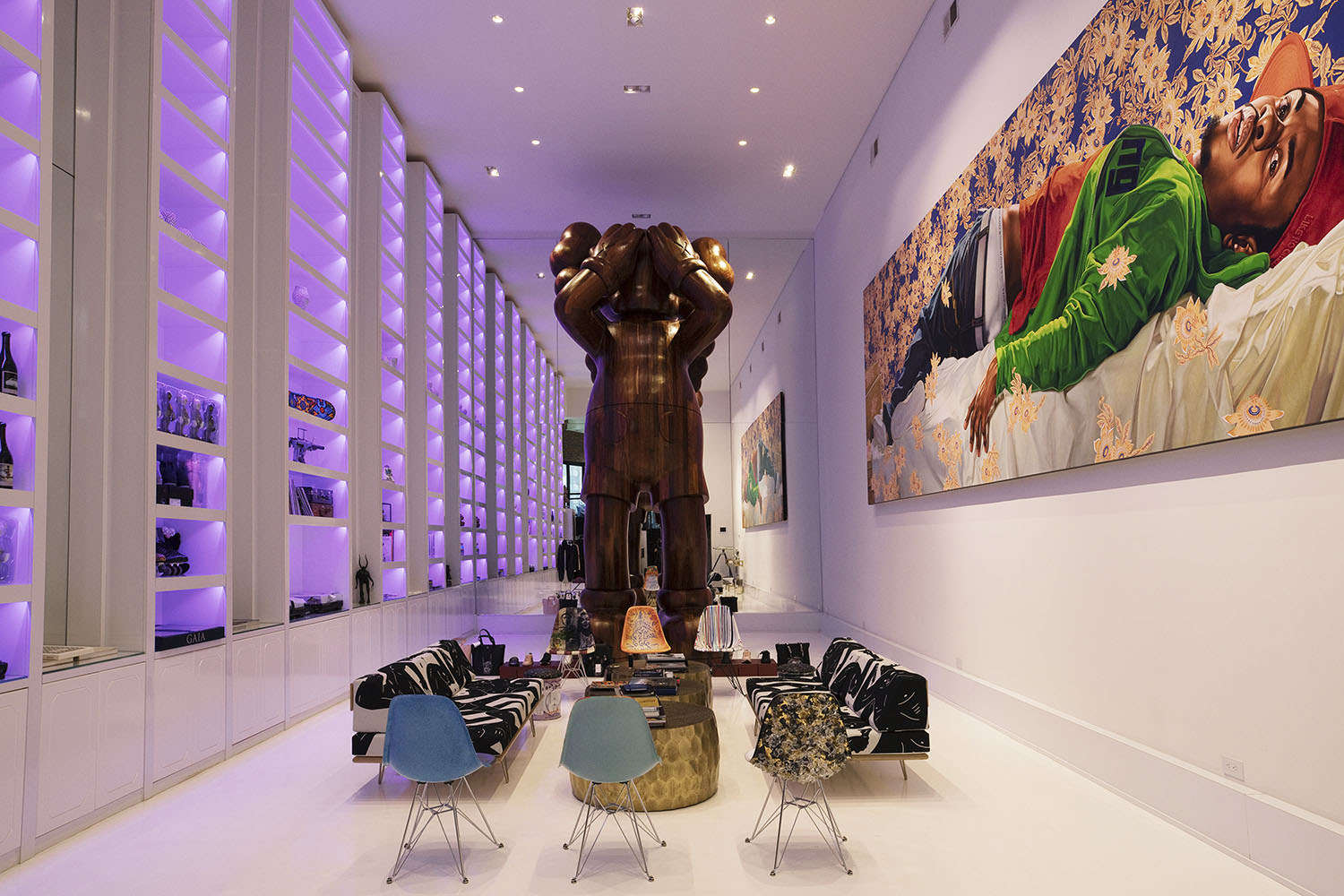 Photo by Steve Benisty
Photo by Steve Benisty
SB: I just love the uniqueness. I love the boldness. I love the paintings. I love the meaning in her work that she challenged. I love the integrity. I love that she’s taking the risk. I love that she’s not scared to express herself no matter what the gender or what the situation is. It’s refreshing to see somebody that’s so talented. It’s so rare.
WW: Why is it important for both of you to connect with artists through your own creative interests? Swizz, we saw a Cleon Peterson sculpture by your pool, and he created the art for your new album, Poison.
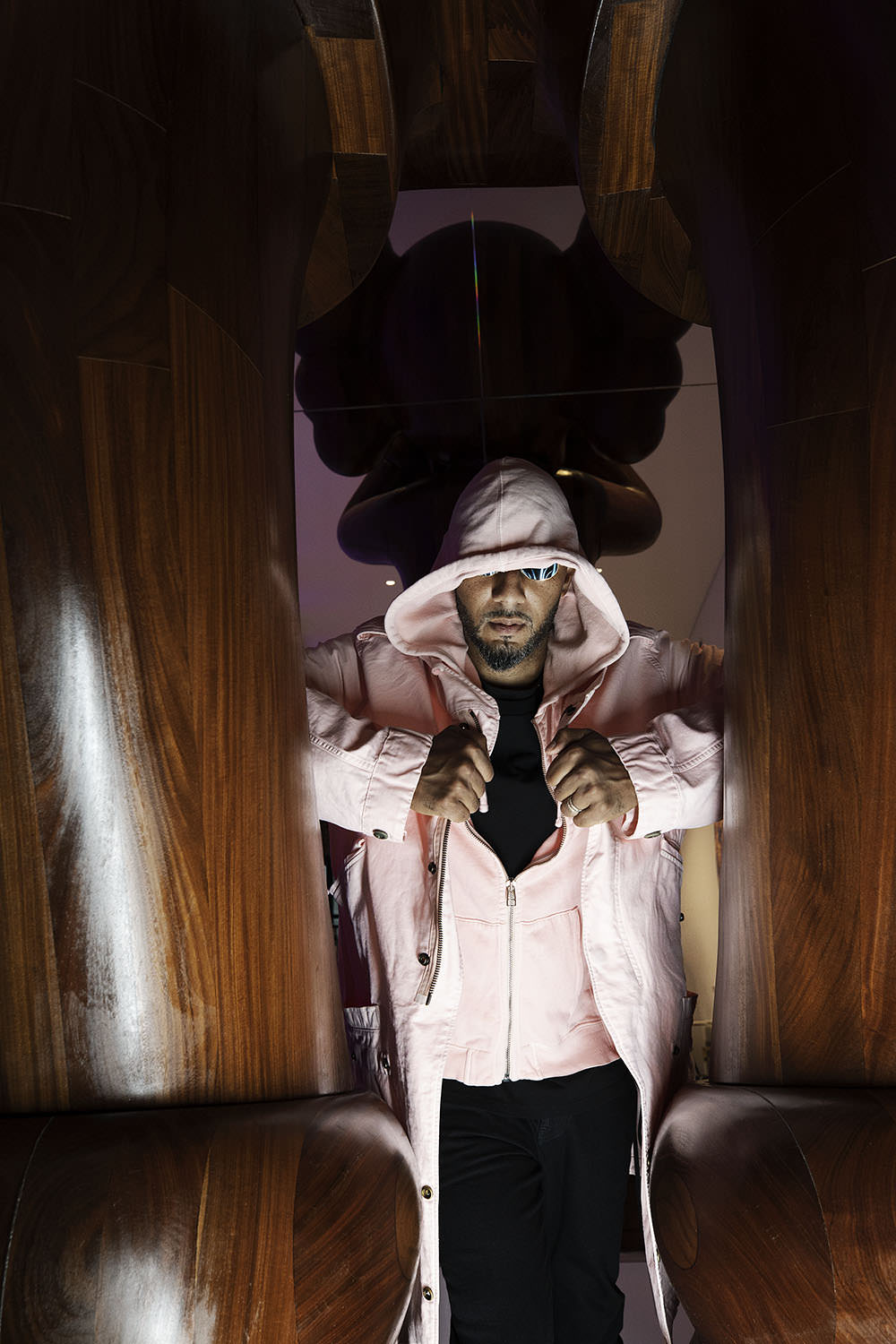 Swizz Beatz
Swizz BeatzPhoto by Steve Benisty
SB: I think it’s important to use my platform and my outlet to take artists to places that they’re fans of—like Cleon Peterson is a fan of music, and Nina Chanel is a fan of fashion. I have a link to those places, and being able to offer my connections to them is what I’m supposed to do.
MB: Faith is a real hub for street artists and creatives. Our New York flagship on Mercer Street is a residence for some of Faith Connexion’s artists. They’re always onsite for customers who want to get pieces customized. We have a new uptown Faith satellite artist station at the newly launched concept space called Le Board. We’re going to have one of our artists there creating magic for anyone that’s interested. Faith doesn’t take profit from whatever work the artist does onsite, and artists are able to take the full fee from our shoppers that go there for customizations.
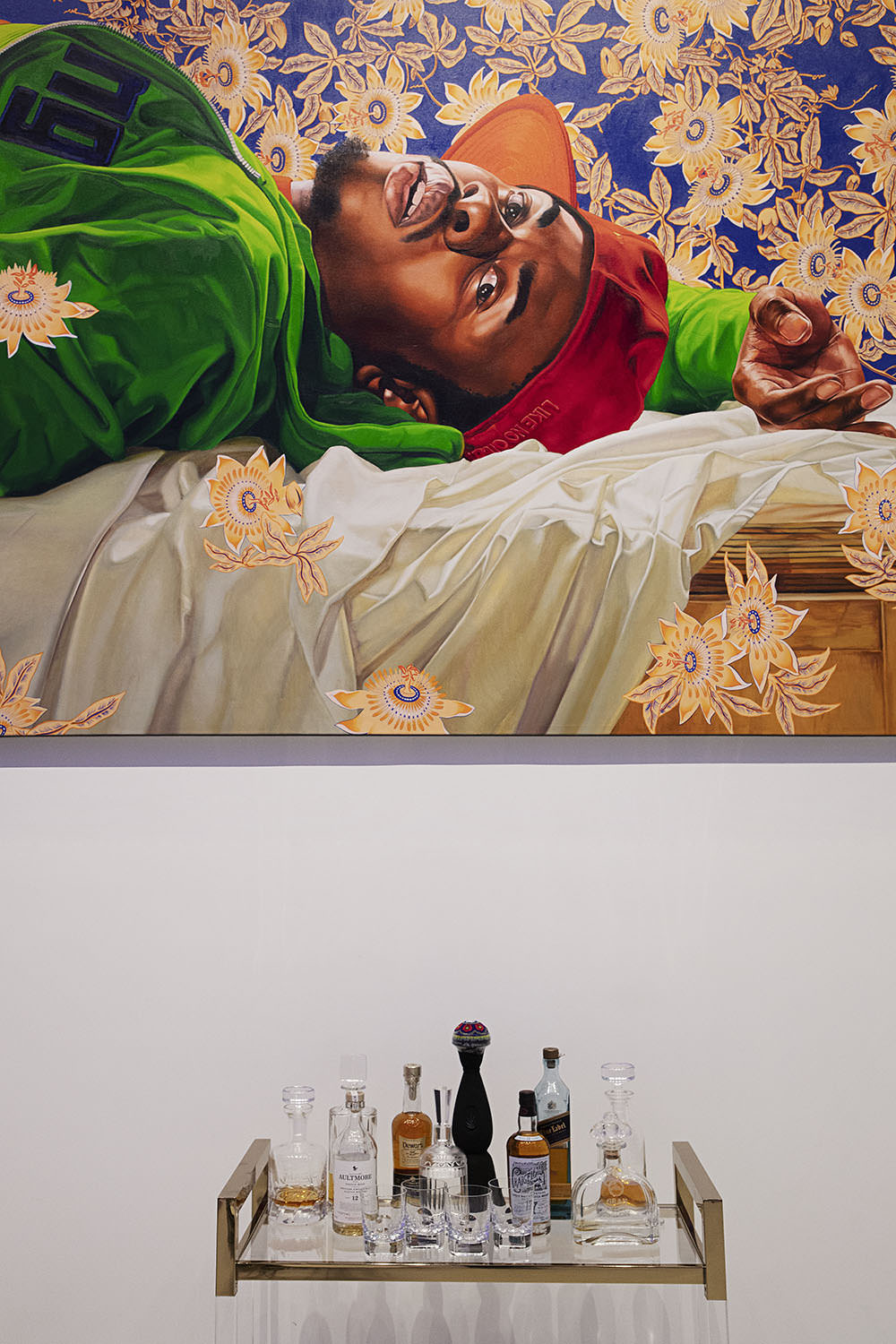 Photo by Steve Benisty
Photo by Steve Benisty
WW: Swizz, Peterson described the painting on the cover of your album as taking back power from the corrupt and fighting for justice. Do you feel that speaks to Poison’s message, too?
SB: Yeah, absolutely. That’s Poison. The name of my album is Poison because you’ve got to fix your poison in order to poise on. That’s the whole concept of the record, and that’s what Cleon is doing in that painting. We can either turn our head and act like it doesn’t exist, or we can face it, overcome it, and become better as people.
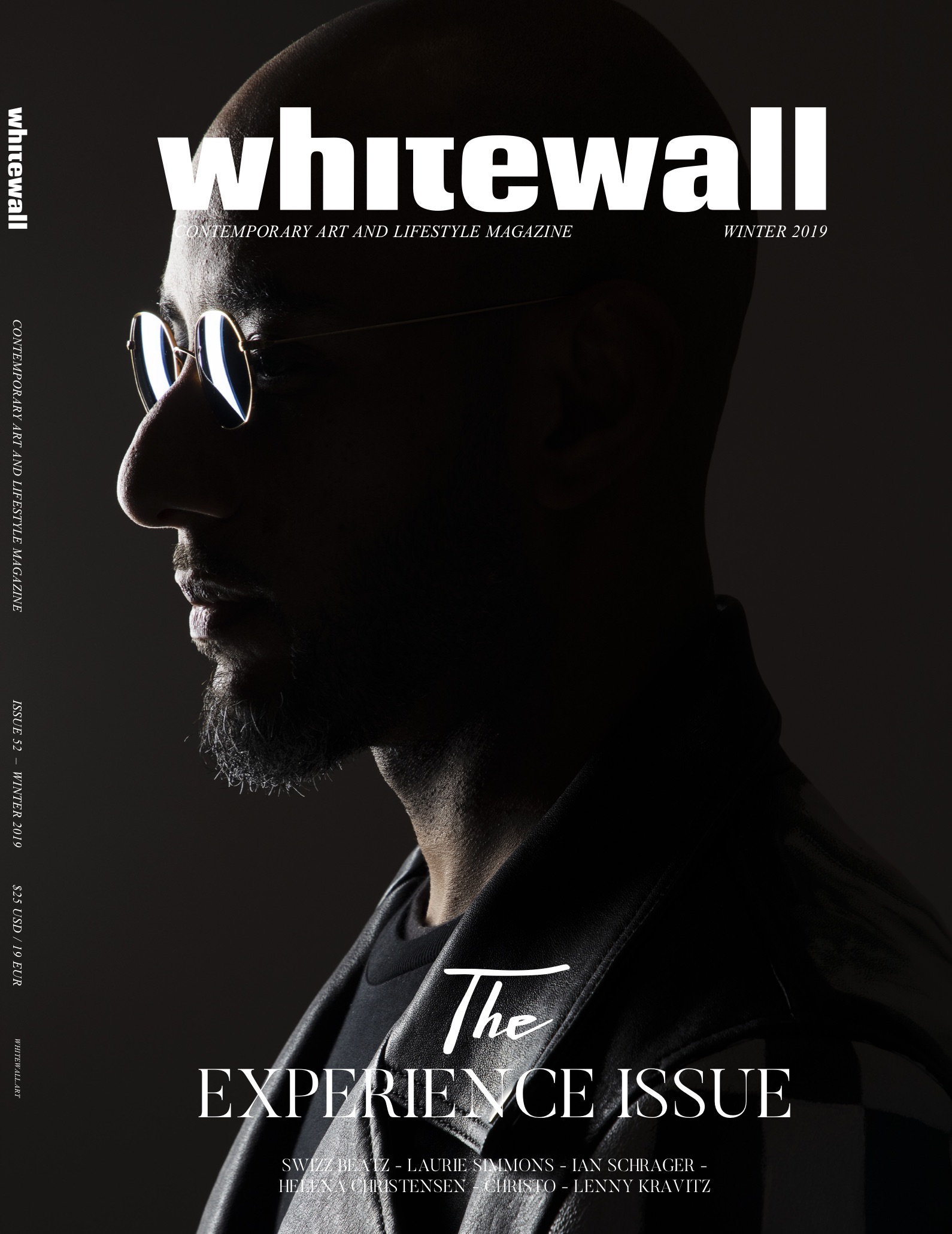 Whitwall’s winter 2019 cover, featuring Swizz Beatz. Photo by Steve Benisty.
Whitwall’s winter 2019 cover, featuring Swizz Beatz. Photo by Steve Benisty.
WW: There are so many “poisons” today, but the current condition of royalties is one of those for artists. Tell us about your view on that.
SB: I think it’s something that’s very unfair for the creators. A lot of people like to challenge me when I bring it up. All artists should be equally represented. I’m talking about the artists that are being exploited. I’m talking about the artists whose works are going for four thousand times more than the value that they were sold at a vulnerable time.
I wanted to change that. But I think the way in changing that is going to be through people having an option, not a rule. Taking care of the artist should be a lifestyle, not a rule or a charity.
WW: Speaking of that,, what do you have planned for this year’s installation of No Commission, presented by Bacardi and The Dean Collection?
SB: It’s going to be amazing. All photography. I wanted to go through the lens of a photographer because it was the most relatable medium at this current time when everybody feels like they’re photographers. I think it’s a change-up for No Commission, and I just want to keep everything that we’re doing fresh.
I picked a lot of unknown names for this show. There are so many people around the world doing photography, and the submissions that we accepted were a lot of no-names. It’s amazing.
We’re going to up the ante on No Commission. We’re going to continue fighting for artists’ royalties and rights, discovering new artists, and just doing what we have the passion for and maintaining.
WW: What is the true power of having a show that charges no commission?
SB: The power is the entry point—giving people the entry point to have access to the art world in a way that’s not regular. The show is free for the people; the artists keep 100 percent of what they sell. You can get something from 50 dollars on up to the hundreds of thousands. We have artists that have been in museums next to up-and-coming artists. It’s a true celebration, and I think the power of that is the power in itself.
Almost 70 percent of our buyers are new buyers, which is great because it’s adding to the art market. It’s adding to new collectors. And that’s what you want. You want to see younger and newer buyers getting into the space because they help drive the conversation.
Then, the success stories of the artists that have been in our shows, like Nina Chanel—that’s amazing. Not that these artists would not have done amazing things without No Commission, it’s just so happened that they were in No Commission before they were famous.
WW: What do you think is the current climate of art fairs right now?
SB: If you’re using the old model in a new model climate then you’re not going to get good results. I think that people need to get more creative. They need to give more power to the artists, and make those fairs more than just a fair—make it an actual entry point, an experience to get into the creative lives instead of just thinking of profits.
WW: Maria, Faith Connexion recently announced the appointment of its first creative director, Nikola Vasari. Can you tell us a bit about what he brings to the table for the brand?
MB: Nikola Vasari’s talent and knowledge of Faith’s creative ethos will seamlessly implement his new creative direction for both the brand and the collective tribe at Faith. We chose Nikola with the desire to evolve a style that combines art, glamour, freedom, and innovation that Faith is known for. Nikola has trained at Balmain, Yves Saint Laurent, and Faith Connexion. He is extremely talented and has that sense of cool, funky, street glam that Faith is known for. He is responsible for our bestselling pieces as well as the most editorial pieces since we launched Faith!
WW: Swizz, you nonchalantly mentioned you had a residency program called Dreamland in Arizona, located in a Frank Lloyd Wright house you have. Can you tell us a bit about that?
SB: My wife and I decided to turn the Arizona property into an artist residency because we haven’t seen residencies for the artists that we collect at this magnitude, and we weren’t really staying at that property. It’s been inspiring for these artists to get away and have some serenity and regroup themselves.
So far, we’ve had four artists—my friends. I haven’t publicly made people aware of Dreamland. It’s still word-of-mouth at this point. It’s been amazing to be able to have so much talent and see them come back just with their spirits in the right place. They stay as long as they want. There aren’t really any rules because we’re not there yet. It’s really free and open.
WW: You’re an involved family man and spend a lot of time traveling and creating with your kids. What are you teaching your kids about the art world?
SB: What I think is important to teach my kids and what I am teaching them about the art world is to love art from your heart. Don’t think of it as an investment or something to play on as a chess strategy, but as something that you love. Meet the artists, support living artists, be friends with those artists, and build something with those living artists instead of just collecting what the hype is. Don’t collect the hype; collect the existence of greatness.
WW: How does being a father shape you as a collector?
SB: It makes me a responsible collector. The Dean Collection is a personal collection belonging to my wife and I. But it’s built for the kids, because we want to have a museum that our family runs someday. They get to go back to and show the world all of these things we collected while they were growing up, and all of these artists that we have met and helped and have been friends of ours. They can pass our legacy down—bigger than just hanging art on our walls in our home, but something that the world can travel and see one day. So that’s the bigger goal here.
I think that having kids put us in that mindset because of the responsibility. I don’t even force my kids to pay attention to art; they naturally gravitate to a thing to do. They love art and being artistic and music. I’m not making them do things just because of what we do as parents. I think that’s wrong—they should have a natural flow in the art and grow up around the art. Then once they get older and understand it on their own, it will all make sense. All of those days of seeing all those different works, coming to the shows—it will all make sense one day.
WW: What do you think the next big thing is?
SB: I think the technology side is going to move forward as far as the underlying of the business—the way that people are able to process art, purchase art, make decisions based on art, find new artists. The art business is still pushing paper when the world is moving even beyond digital now. The art world has to catch up, and they have to catch up fast.
I wouldn’t get comfortable with sold-out shows or anything like that. We need to look at graduating the strategy and the new business model of how people sell works. And a lot of institutions try to do cool things and they’re trying to hold on, but you can’t halfway make the jump. You have to fully make the jump into the future if you want to be around for it.










